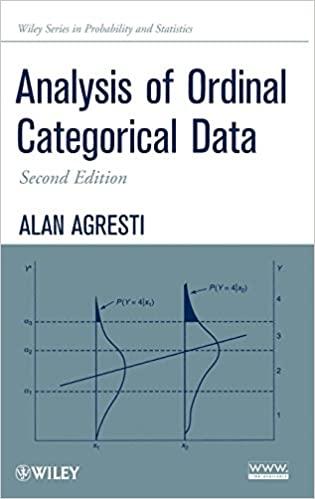2.6. Lehmann (1966) defined two random variables (X, Y), discrete or continuous, to be positively quadrant dependent
Question:
2.6. Lehmann (1966) defined two random variables (X, Y), discrete or continuous, to be positively quadrant dependent if P(X
whenever x\ < X2 and y\ < yj. He defined Y to be positively regression dependent on X if P(Y < y \ X = x) is nonincreasing in x.
(a) Show that the bivariate normal distribution satisfies positive likelihoodratio dependence.
(b) For cross-classifications of ordinal variables, explain why positive quadrant dependence corresponds to {logo? > 0}, positive likelihood-ratio dependence corresponds to {log#l· > 0}, and positive regression dependence corresponds to {\og§fj > 0}.
Step by Step Answer:






